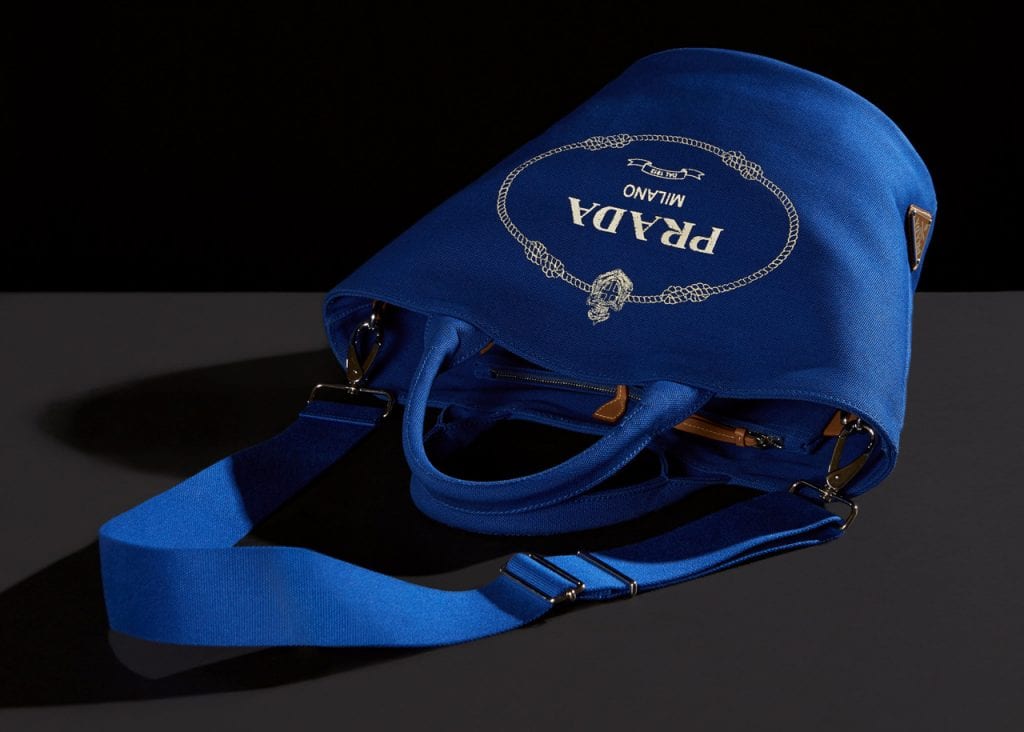Digital media and more specifically, social media, has changed the fashion industry in ways that may have previously been unfathomable. The instant and democratizing accessibility that Instagram brings, and demands that seasonal fashion events not only cut through the noise of crowded social media platforms in order to be effective but also be part of a larger experience-driven endeavor, have transformed the behind-the-scenes workings of the fashion industry and its outputs.
As the New York Times’ Matthew Schneier put it some four years ago, just after Chanel staged a full-scale supermarket, complete with produce, 100,000-plus branded groceries (including Le 9 de Chanel eggs, color-coordinated Tweed Teas, Le Brie Gabrielle cheese, CoCo Choco cholate, etc.), and woven leather and chain-link shopping baskets, fashion in the age of Instagram is “a heady era in which … shows are calibrated to be socially shared experiences, and fashion itself is rejiggered to catch eyes on a two-dimensional screen.”
Yes, the advent of digital media has fundamentally altered fashion from “the way that we shoot it [and] the way that we showcase it [to] the way that we make the clothes and design them,” Alexander Wang told the Times. “Sometimes, I have to admit, as a designer, you get into this trap of thinking about clothes for a picture rather than what’s going to go into the market or showroom.”
Beyond the digitally-inspired design tweaks that abound (whether it be an emphasis on front-heavy designs, since the back of a garment is rarely seen on Vogue Runway, or a slight movement away from showing too many all-black looks, since the color is notoriously difficult to photograph with depth) and the over-the-top runway spectacles, the changes brought about by digital media are being practiced by buyers, as well.
Brigitte Chartrand, the senior womenswear buying director for SSENSE, the Montreal-based fashion e-commerce company, spoke to Quartz about it. Aside from the fact that “the life cycle of products has shortened quite a bit,” which Chartrand says is due to “the high visibility of luxury goods on social media” and consumers’ increasingly sped-up fatigue with existing designs in favor of new things, there is an increased focus – industry-wide – on how products will look online.
“How does this look in a photograph?” This is something that designers, “10 years ago were not thinking about,” according to Chartrand. Nowadays, however, this is oftentimes an inquiry from the outset. It is no longer an afterthought on the design side of the equation.
In terms of retail buyers: “There are things that sometimes we won’t buy because it doesn’t necessarily translate online.” For example, “Black-on-black detailing might be a bit difficult … Anything that’s not contrasted, we know won’t register as well online,” Chartrand notes. “Or if it’s beaded versus print, and things like that.”
Still yet, “Online it’s a little bit harder to buy a very tailored dress or a suit. It’s just easier to click and checkout with something that is a little bit more casual.” This is why a huge portion of SSENSE’s sales to consumers tend to come in the form of garments made from jersey-type materials, or other easily-fitted textiles.
As for how SSENSE gauges what – exactly – to stock, Chartrand says, “We look at many different types of data: We’ll look at how quickly a certain product sold. The margin, the price point. We make connections between certain products. We make connections between certain brands.” Moreover, “We look at a lot of different types of attributes, colors. All of these things will influence the amount of units we’ll put behind a certain product. A brand name, the recognition, awareness, the traffic, where it’s sold, which country it’s sold in.”
And of course, they consider, how it will look online, including on Instagram, fashion’s discovery-channel of choice.











